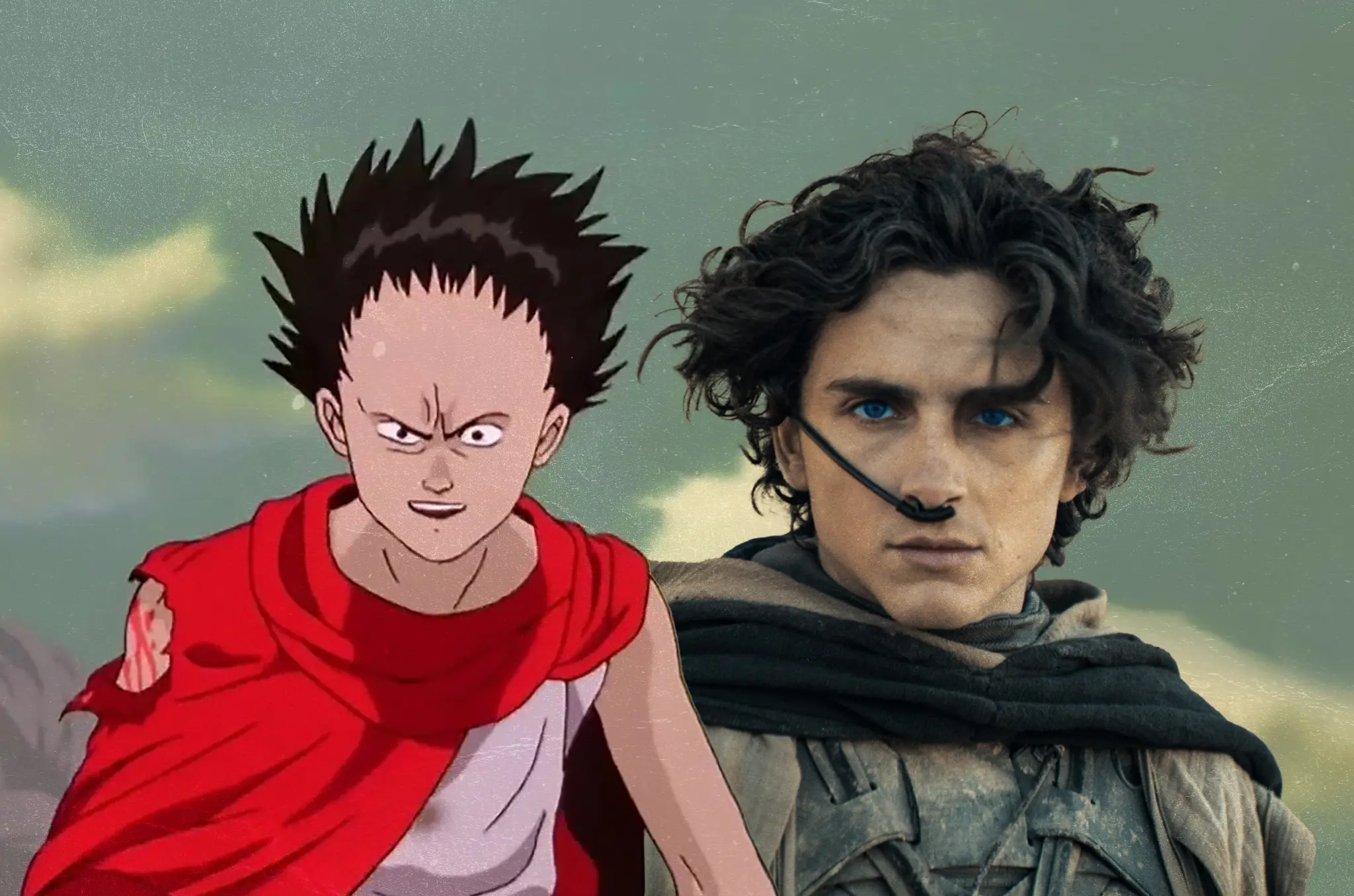Katsuhiro Otomo’s 1988 cyberpunk action film Akira is one of the most influential anime of all time. Over the years, its “Akira slide,” showing one of the film’s protagonists stopping his bike in an iconic slide and shower of sparks and smoke, has been parodied and referenced in everything from Batman: The Animated Series to the Palworld video game.
So great is the power of Akira that the movie even helped shape the plot of Dune: Part Two. Released in 2024, the sequel completed writer-director Denis Villeneuve’s adaptation of the famous sci-fi novel by Frank Herbert. It was critically acclaimed despite taking some liberties with the source material. Liberties apparently inspired by Akira.

Akira and Dune: Two Peas in a Sci-fi Pod
According to a 2024 interview with Esquire magazine, Villeneuve is a huge fan of the Akira anime, and was apparently thinking about it while he was working on Dune: Part Two. But why? The two couldn’t be more different.
Akira takes place in Japan’s Neo-Tokyo, a city that has risen from the ashes of the old Japanese capital after being destroyed during a cataclysmic event that triggered World War III because of the powerful esper, Akira. Years later, in the far-flung year of… 2019, Akira’s return seems imminent after an incident involving the motorcycle gang member Tetsuo.
Dune, on the other hand, takes place in the 102nd century on the distant planet of Arrakis. There, forces of space feudal families battle the Fremen, natives of Arrakis, for control of the planet’s naturally-occurring drug that makes interstellar travel possible. Also, Arrakis is just full of sand (mostly in dune form), so it is very hard to do a bike slide.
Despite this, there are some similarities between Akira and Dune. After his accident, Tetsuo starts developing psychic abilities against the backdrop of anti-government riots and gets entangled in the actions of a resistance movement against the city’s officials.
Similarly, Paul Atreides (Timothée Chalamet), the protagonist of Dune, also possesses psychic abilities and, in Dune: Part Two, joins the Fremen in their resistance against the people claiming Arrakis as their own.
Both movies also have heavy messianic plots, with Akira cultists briefly mistaking Tetsuo for their savior, and many Fremen hailing Paul as their chosen one who’ll lead them and the planet to peace and prosperity.

How Akira Bike-Slid Right Into Dune: Part Two
Villeneuve’s Dune sequel ultimately focuses on Paul going against his initial decision to live with the Fremen as one of their own and instead using their belief in him being their messiah (which he knows for a fact is not true) in order to exact revenge on the people who tried to destroy his family.
This is basically what happens in the book, but the movie makes a few changes to the story, like making Paul’s turn to the dark side more violent and giving him a psychopathic edge as he embraces the idea of a holy war during the finale.
The portrayal of Paul in the movie as a villain-tainted protagonist was a deviation from the Herbert novel, but it was perhaps needed in this day and age. It was also inspired by Tetsuo’s arc.
At the start of Akira, all Tetsuo wants out of life is a cool new bike, but after getting powers, he sets out on a path of destruction and settling grudges. Having lived with a massive chip on his shoulder, the suddenly powerful Tetsuo is willing to kill even those he’s known for most of his life if he feels they’re disrespecting him or just simply because they’ve annoyed him.
His dark spiral is the main reason why, near the end of the movie, Paul sticks a knife in the neck of the man who tried to wipe out his family and says: “You die like an animal.” Later, he even leaves the man’s body in the desert to be eaten by ants.
Initially, Villeneuve was not sure where these ideas were coming from, but while storyboarding everything, it hit him. He apparently said to himself: “I’m doing Akira.”

The Necessary Sacrifices
In order to make the changes to Paul work, Villeneuve had to cut out a few key moments from the original story.
At the end of the first movie, Paul kills the Fremen Jamis, whose death in the sequel gives us some cool insight into Fremen funeral rites but otherwise doesn’t play a big role in the story. In the original Dune, though, Jamis’ death is felt throughout the novel as Paul is forced to take care of the man’s wife and children according to Fremen custom.
While Paul had no romantic feelings for Jamis’ widow, adding a relationship with another woman could have distracted the audience from the romantic subplot (and eventual falling out) with Chani (Zendaya), whose story has also been pruned.
In the book, she and Paul had a child together, who died during an attack on a Fremen village. Its presence and death in the movie could have been seen as the reason for Paul’s madness, but it wasn’t what Villeneuve’s Akira-obsessed mind was going for.
The “You die like an animal” scene was probably the most major departure from the source material as, in the book, the death wasn’t as graphic though it was carried out by Paul’s 2-year-old sister (it’s a wonderfully weird book).
In the end, while Villeneuve’s Dune: Part Two is close to Herbet’s novel — sometimes more in spirit than the letter — it would not be the movie that it is today without Akira, which continues to influence pop culture nearly 40 years after it was released.









